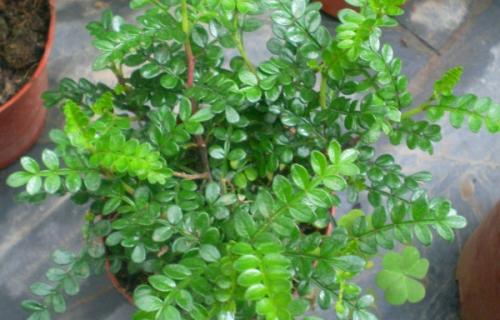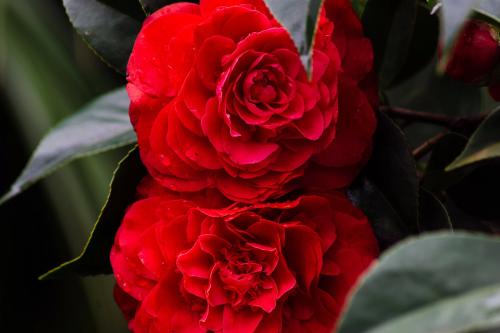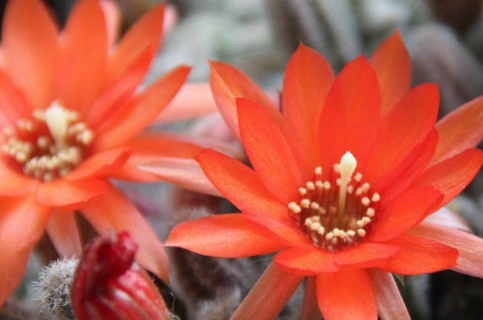The Propagation Mode of Fragrance Wood
1. Sowing seeds
The seeds of fragrant wood are not easy to collect. Once the seeds of fragrant wood show signs of maturity, they should be picked from the tree in time and preserved with medicine. When the fragrant wood grows for a long time, it can be sown.
2. Cuttage
Choose a well-developed mother tree to cut off the branches, cut them off and dry them for two days, then insert them into the pre-configured soil after the wound heals, and finally cover them with plastic film after watering.

Well, this is the end of today's content. I hope the breeding methods and notes of fragrant wood provided by the editor can be helpful to you. Thank you for your reading!
How to propagate fragrant wood the propagation method of fragrant wood
Fragrant wood gets its name because its leaves can give off a faint fragrance. So do you know how to reproduce fragrant wood? Next, let's take a look at the breeding methods of incense wood.
1. Sowing and propagation: the mature period of fragrant wood seeds is very close to the scattered period. When it comes to maturity, it will fall off in case of wind and rain, and it is not easy to collect or be pecked by birds and animals. When the seeds begin to show signs of maturity, the seeds should be picked back from the tree in time. The seeds of fragrant wood are wrapped in succulent pulp and are prone to pollution and mildew. The seeds collected must be immediately prepared: pile the fruit, mash the pericarp, wash it in water, thresh and discard it and dry it in the shade and store it in a ventilated and dry place.
Sowing season: spring and autumn. Generally speaking, the germination rate of autumn sowing is higher than that of spring sowing. Before sowing, soak the selected seeds in warm water with an initial temperature of about 20 degrees Celsius for 24 hours, absorb water and expand, and sprout under warm and humid conditions. The general seed consumption is 6 kg per mu.
Seedling management precautions: fragrant wood seedlings have three fears: first, they are afraid of waterlogging. The soil should be kept dry and loose as far as possible, generally not watered or watered as little as possible. Second, they are afraid of yin. Seedling stage should be time for seedlings, increase seedling transmittance, ventilation and ventilation. The third is to be afraid of fat damage. Fragrant wood is more sensitive to fertilizer, seedlings try to apply little or no fertilizer, to avoid excessive fertility, resulting in seedling burning or overgrowth.
2. Cutting seedlings: cuttings can be cut in spring and autumn. During the period when the trees were quiet, one-year-old strong branches of the adult mother tree were selected and cut into cuttings 1O~l5 cm long, with the upper cut 1.5 cm away from the bud and the lower cut O.3~O.5 cm from the bud. The cutting medium should choose the soil with good permeability, medium water holding capacity and neutral or slightly acidic pH value.
Before cutting, the substrate should be disinfected. Soak the base of cuttings with ABT rooting powder (see instructions). The impregnation time is 12-24 hours. The cuttings were planted in trenches, and the cuttings were inserted into the soil 2 to 3 or so. Cover with plastic film after insertion, improve air humidity, fine management before rooting, and start rooting in about 45 days.
How does fragrant wood reproduce? Introduction to the Propagation method of Fragrance Wood
Fragrant wood is a positive tree, but it is also slightly shade-tolerant and likes warmth, which requires deep soil layer, strong germination, slow growth and long life, but the cold resistance of seedlings is not strong, so it needs to be protected in North China. The plant can withstand the low temperature of-10 ℃, like the soil with sufficient light and not easy to accumulate water. Fragrant wood usually uses sowing propagation and cutting propagation. Let's take a look at the propagation methods of incense wood.
Sowing and propagation of fragrant wood
The mature period of fragrant wood seeds is very close to the scattered stage. Once it is mature, it will fall off in case of wind and rain, and it is not easy to collect, or be pecked by birds and animals. When the seeds begin to show signs of maturity, the seeds should be picked back from the tree in time. The seeds of fragrant wood are wrapped in succulent pulp and are prone to pollution and mildew. The seeds collected must be immediately prepared: pile the fruit, mash the pericarp, wash it in water, thresh and discard it and dry it in the shade and store it in a ventilated and dry place.
1. Sowing season: either spring or autumn. Generally, the germination rate of autumn sowing is higher than that of spring sowing. Before sowing, soak the selected seeds in warm water with an initial temperature of about 20 degrees Celsius for 24 hours, absorb water and expand, and sprout under warm and humid conditions. The general seed consumption is 6 kg per mu.
2. Points for attention
① is afraid of waterlogging: the soil should be kept dry and loose as far as possible, generally not watered or watered as little as possible.
② is afraid of shade: seedling stage and time seedling, increase seedling transmittance, ventilation and ventilation.
③ is afraid of fertilizer damage: fragrant wood is more sensitive to fertilizer, seedlings try to apply little or no fertilizer, to avoid excessive fertility, resulting in seedling burning or overgrowth.
Cuttage seedling of fragrant wood
Cuttings can be cut in both spring and autumn. During the period when the trees are quiet, one-year-old strong branches of the mother tree are selected and cut into cuttings 1O~l5 centimeters long. The upper cut is 1.5 centimeters away from the bud and the lower cut is O.3~O.5 centimeters from the bud. The cutting medium should choose the soil with good permeability, medium water holding capacity and neutral or slightly acidic pH value.
Before cutting, the substrate should be disinfected. Soak the base of cuttings with ABT rooting powder (see instructions). The impregnation time is 12-24 hours. The cuttings were planted in trenches, and the cuttings were inserted into the soil 2 to 3 or so. Cover with plastic film after insertion, improve air humidity, fine management before rooting, and start rooting in about 45 days.
- Prev

Cutting time of camellias
According to the characteristics of camellias, the best time to cut camellias is in September or in spring. Because camellias are not resistant to high temperature and cold, the temperature is most suitable for cutting in September or spring, so that the roots are not easy to rot and are beneficial to the survival of cuttings.
- Next

Maintenance of white sandalwood in summer
1, avoid high temperature and muggy summer, white sandalwood is very easy to rot if it is not ventilated in the environment, which needs to be paid attention to. It is best to put white sandalwood in the semi-shade of the balcony and often open the window to breathe. 2. avoid water and white sandalwood blossom in summer
Related
- Fuxing push coffee new agricultural production and marketing class: lack of small-scale processing plants
- Jujube rice field leisure farm deep ploughing Yilan for five years to create a space for organic food and play
- Nongyu Farm-A trial of organic papaya for brave women with advanced technology
- Four points for attention in the prevention and control of diseases and insect pests of edible fungi
- How to add nutrient solution to Edible Fungi
- Is there any good way to control edible fungus mites?
- Open Inoculation Technology of Edible Fungi
- Is there any clever way to use fertilizer for edible fungus in winter?
- What agents are used to kill the pathogens of edible fungi in the mushroom shed?
- Rapid drying of Edible Fungi

